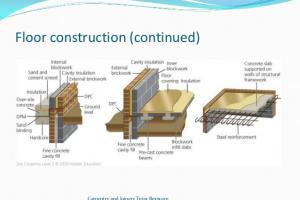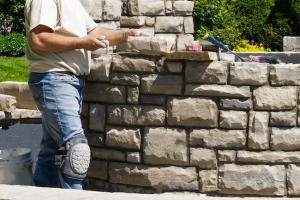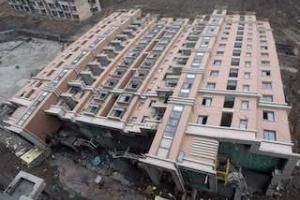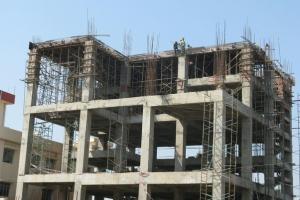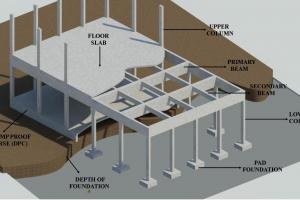Key Components of Confined Masonry Building

The key features of structural components of a confined masonry building are discussed below:
Also See: Reinforced Concrete Building Components
Masonry walls
Masonry walls transmit the gravity load from the slab(s) above, down to the foundation (along with the RC tie-columns). The confined masonry walls are made up of solid clay bricks and act as bracing panels, which resist horizontal earthquake forces acting in-plane. The walls must be confined by RC tie-beams and tie-columns and should not be penetrated by significant openings to ensure satisfactory earthquake performance.
Confining elements
RC tie-columns and RC tie-beams are effective in improving stability and integrity of masonry walls for in-plane and out-of-plane earthquake effects. These elements prevent brittle seismic response of masonry walls and protect them from complete disintegration even in major earthquakes. Confining elements, particularly tie-columns, contribute to the overall building stability for gravity loads.
Floor and roof slabs
Floor and roof slabs transmit both gravity and lateral loads to the walls. In an earthquake, floor and roof slabs behave like horizontal beams and are called diaphragms. The roof slabs are typically made of reinforced concrete.
Plinth band
Plinth band transmits the load from the walls down to the foundation. It also protects the ground floor walls from excessive settlement in soft soil conditions and the moisture penetration into the building.
Foundation
Foundation for confined masonry walls consist of 2" thick plain cement concrete (P.C.C), 9" thick reinforced cement concrete (R.C.C) which supports stepped brick wall at it's base. Foundation transmits the loads from the structure to the ground and prevents the structure from overtopping during lateral shaking from earthquakes.



